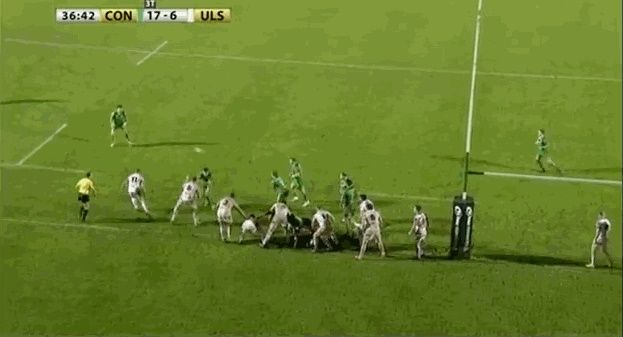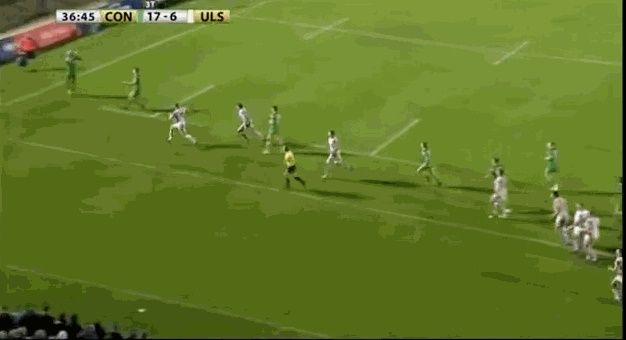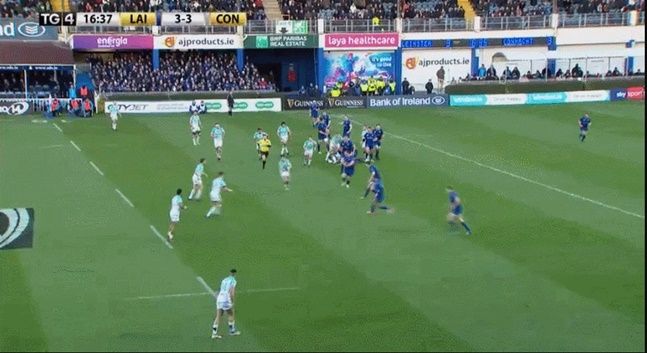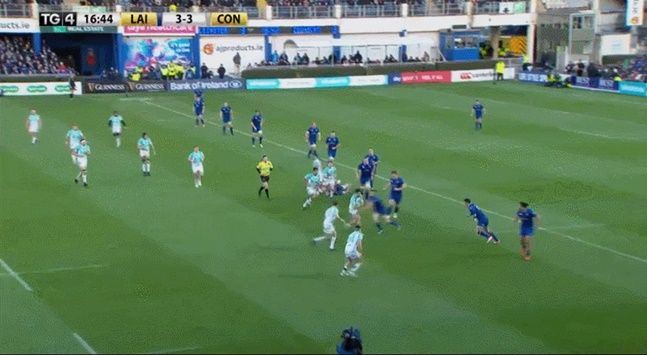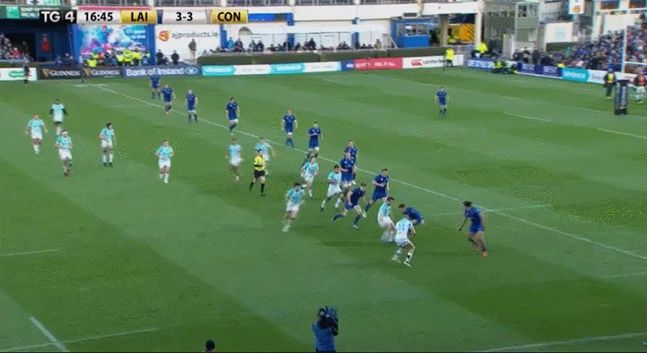Tiernan O’Halloran is an exceptional rugby player.
He has a great eye for a gap, he has top end speed, he runs intelligent lines and he can make tacklers miss.
It’s often a wonder how he only has six caps to his name given he was first brought in to train with the Ireland squad in 2012, but Rob Kearney, Simon Zebo and injuries have proven to be significant road blocks in O’Halloran’s route to the national team.
The Connacht full-back entered the current campaign following off-season knee surgery during the summer, which was then compounded by a hip injury that ultimately cost him his place in the Ireland squad for the November internationals.
It’s been a stop start season for O’Halloran, he admitted as much last month, but the weekend before last at the Sportsgrounds he showed signs that he was getting was back to his best.
From the outset O’Halloran looked to attack with pace and venom, and although Joe Schmidt probably lost some hairs on his head watching him carry the ball in one hand, his pass to Matt Healy in the build up to Connacht’s first try was expertly timed and created an opportunity for Kieran Marmion to exploit at the next ruck, which led directly to Bundee Aki’s try.
Later in the half he turned from provider to scorer after he burst through a gap following a switch with Aki before making the cover defender miss.
Peter Nelson really should have done a better job in the tackle, but O’Halloran was excellent at creating the opportunity for himself by showing great acceleration, footwork and running a smart line.
In the absence of Joey Carbery, and with Simon Zebo ostracised, Ireland really could use a secondary playmaker like O’Halloran off the bench.
As long as Rob Kearney is fit and available he will almost certainly start at full-back under Schmidt, but in O’Halloran, Ireland would also have a player that has proven to be comfortable at stepping in at first-receiver.
If you discount the nine tries that Ireland scored against a porous Italy side in last year’s championship, the team managed just five tries in the other four games.
Johnny Sexton is the chief playmaker of Ireland’s attack but as we’ve seen in Rob Kearney’s absence at Leinster, the Lions fly-half is able to work very well with a secondary receiver like Joey Carbery.
O’Halloran has proven that he can step in and fulfil a similar role from full-back.
With Ulster on the ropes nearing the end of the first-half, O’Halloran stepped into first-receiver and found Niyi Adeolokun with a cut out pass after getting on the outside of Andrew Trimble before drawing in the second defender.
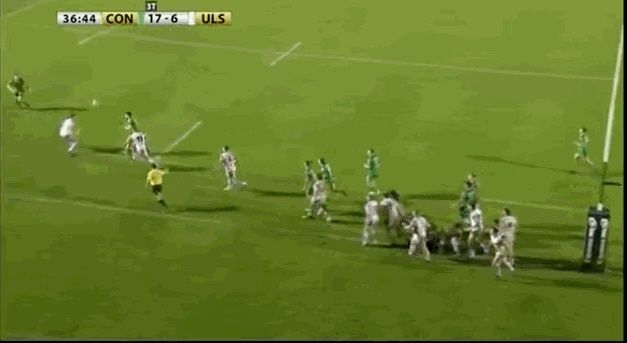
If Adeolokun keeps his footing he gives himself an excellent opportunity at scoring.
In the second-half O’Halloran once again steps into the line after a great break from Adeolokun.
The Ireland winger made great metres after pouncing on a cross kick before he was taken down metres away from the line. The Ulster defence was committed to defending around the ruck, and a couple of pick and drives later and O’Halloran calls for the ball before finding Jarrad Butler with a nice cutout pass.
Against Leinster on New Year’s Day he found himself in a similar predicament where he had to step into the line on back-to-back plays with fly-half Jack Carty hovering beside him.
The pass is not the sharpest to inside centre Tom Farrell, but the Dubliner does very well to evade the challenge of Noel Reid before Connacht get a quick recycle and go again.
On the next phase, O’Halloran is then able to shift the ball quickly to Carty who puts a grubber kick in behind the defence to Rob Kearney who knocks the ball on under pressure.
It results in a big net gain for Connacht and caps off a nice passage of play for Kieran Keane’s side.
Although he showed a lot of positive moments, O’Halloran did not have the perfect game against Leinster.
He knocked on from a kick off, he couldn’t claim the high ball in a heavy collision with Fergus McFadden, and he almost got beaten on his inside by Johnny Sexton in the passage just before Max Deegan’s opening try of the game.
Schmidt will have noted his mistakes but he has shown enough over these first two interprovincial derbies to warrant some serious consideration for next month’s Six Nations.
He tackles hard, just ask Fergus McFadden. He chases open runners down, ask both Rob Kearney and Johnny McPhillips. And when he’s in open play he looks to beat defenders and find his way to the line.
Joe Schmidt named four different players (Tommy Bowe, Andrew Trimble, Craig Gilroy and Andrew Conway) as the 23rd man in his Six Nations matchday squads last year.
Not one of those players recorded a try assist and Craig Gilroy was the only player to score in any of those matches, a hat-trick against an Italian side that had already conceded five tries by the time he hit the pitch.
Of the five tries Ireland scored against teams that weren’t Italy, only one of those tries came in the last 20 minutes, Paddy Jackson’s score in the opening game against Scotland.
Ireland need something different off the bench this year, and while there is a lot of competition for places, O’Halloran may be worth a shot in the latest season of Ireland’s back-three carousel.

